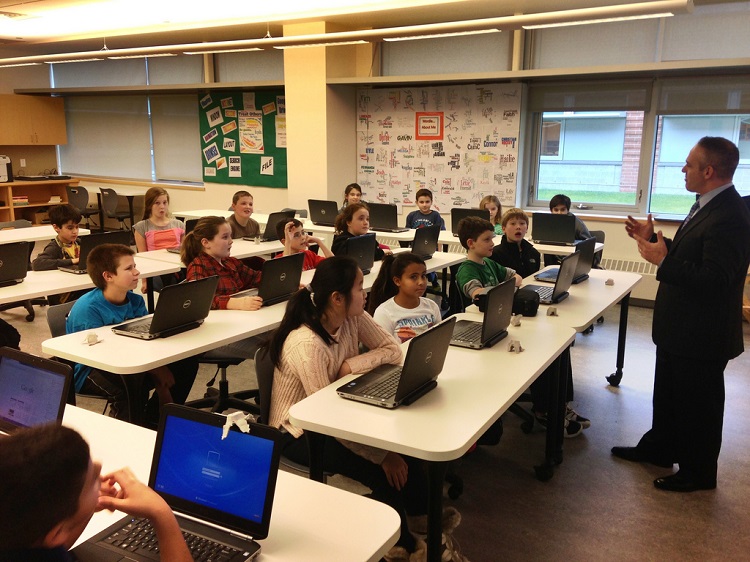The growing prevalence of technology in education has caused some parents and experts to question its value and even suggest such modern methods hurt more than help our students. Although it may appear to some that technology could hinder rather than enhance student experiences and outcomes, I think we can parse the question a bit further.
For instance, in his recent piece, “Too Much Tech, Not Enough Learning?”, Ben Johnson suggests, “Our student learning is so diluted by bountiful resources and access to all types of knowledge and learning activities that our students are overwhelmed with learning.”
He goes on to say: “If we want our students to do better, I think we can take a lesson from the countries that are cleaning our clocks on the fairly easy PISA, which is designed to test thinking. Sometimes I wish I could go back to the days of chalk boards and overhead transparencies, not just simplify teaching and learning but to minimize distractions and focus on what is important—just plain learning.”
Whether we like it or not, technology is here to stay. It is central to our everyday experiences, even more so for young people of each new generation. Wishing technology away or returning to the days of chalk boards and overhead transparencies, doesn’t get at the real challenges. Let’s face it, we still had underperforming students, those less motivated, and those disconnected from learning even in those days.
Rather, let’s harness the best of what technology has to offer and find the most effective ways to enhance learning while keeping the best of what face-to-face instruction has to offer. My first point is we can still have tried-and-true practices for learning and the right technology to enhance it. It shouldn’t be an either-or choice.
For example, according to Evergreen Education Group’s “Keeping Pace with K-12 Online and Blended Learning 2012,” “Online and blended learning can result in better student outcomes if implemented well, or flat/negative outcomes if implemented poorly.”
Indeed, there are plenty of myths—and realities—about technology in education; whether it’s in the form of online or blended learning. Some of the myths include: online learners spend all their time on a computer, or have little social interaction, or that there is no evidence that online learning works. Research, including a recent report from Digital Learning Now!, shows the realities are quite the opposite.
Three arguments stand out for me in Johnson’s piece. We see similar points of view from others who are critical of technology in education. He feels that, as a result of too much reliance on technology, students become overwhelmed with learning, students’ thinking skills are diminished, and that minimizing technology will help students focus on learning.
I respectfully disagree. Let’s acknowledge that technology in education remains a relatively new phenomenon. We’ve learned a lot so far and we’re still learning. Educational media and technology is significantly more sophisticated than it was just five years ago. For example, the shift from “digital learning” to “personal digital learning” holds great promise. Here’s the difference: personal digital learning addresses different math problems, different reading passages, and different science experiments for each learner based on their level of understanding as well as a need for practice, remediation or more advanced examples. It’s the ultimate student-centered learning approach. It empowers students with the skills, information and tools they need to manage their own learning.
Make no mistake, there is a lot of noise and static in the marketplace—and, frankly, there are some apps and online products that are less than optimal for learning. The technology itself so rapidly changes that public policies, laws, and best practices don’t always keep pace with change. The pace affects teacher training and implementation. All too often, government officials, educators and parents clamor for the latest shiny object without really knowing why they want it, how it will be used or if it has true benefits. I wonder if Johnson’s assertion that “students may be overwhelmed with learning” is stemming from educators being overwhelmed. Many don’t have a clear vision of what, where, and how they want to implement technology to enhance learning.
Educators can be thoughtful, selective, and make informed choices. This requires knowing what they want to accomplish as well as how and why technology will be used. A comfortable, confident and focused approach to implementation means students will be more focused and less overwhelmed with learning. Using quality standards to evaluate any type of online learning is a good place to start. The International Association for K-12 Online Learning (iNACOL) has a number of quality standards that help educators evaluate online learning.
Finally, there is nothing I know of inherently germane to online learning or interactive technology based on solid instructional design that would diminish thinking skills. Rather, the right use of technology, the right kinds of age-appropriate, adaptive online learning has enormous power to activate thinking skills.
Image via Massachutsetts Education Secretary Matt Malone/CC 2.0









































